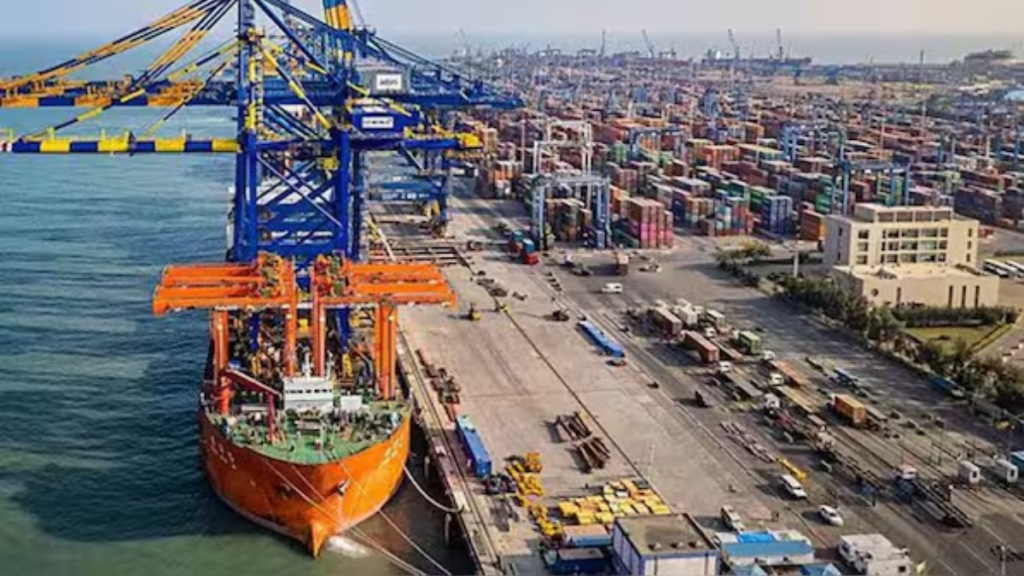The conflict in West Asia has entered a new and unstable phase, creating significant concerns for global and Indian traders as a prolonged disruption in trade looms. Iran’s recent barrage of missiles on Israel has intensified the conflict, raising fears that the vital Red Sea shipping route may remain inaccessible to global shipping lines for an extended period, potentially leading to uncomfortably high freight rates.
The escalation of the year-long conflict has been marked by Israel’s shift of military focus from Hamas in Gaza to the more powerful Iranian proxy, Hezbollah, through a military operation in Lebanon. This shift follows dramatic explosions targeting Hezbollah members and the assassination of its long-time leader, Hassan Nasrallah.
The widening conflict has increased the risk of trade disruptions, particularly as Hezbollah has close ties with Houthi rebels in Yemen, who are responsible for the majority of attacks on ships traversing the Red Sea route. India, heavily reliant on the Suez Canal for trade with Europe, the US, Africa, and West Asia, faces significant implications, with the regions accounting for over $400 billion in FY23, according to Crisil Ratings.
Impact on India and the Silver Linings
The conflict’s impact is already being felt, with Indian exporters experiencing a 9% decline in exports in August, largely due to a 38 per cent reduction in petroleum exports attributed to declining margins and rising shipping costs. A report by Crisil warned of further impact on exports, particularly in the petroleum sector, as incremental shipping costs are likely to reduce overall spreads, impacting the profitability of standalone refiners.
However, India’s trade with neutral regional players such as Saudi Arabia, the UAE, Kuwait, and Qatar has provided a silver lining, with trade with these Gulf Cooperation Council (GCC) countries increasing by 17.8 per cent between January and July 2024 compared to the previous year. India’s exports to Iran also grew by 15.2 per cent during the same period.
Longer Trade Route Pushing Shipping Rates Higher
Disruptions in key shipping routes, particularly through the Suez Canal and the Red Sea, have led to a 15-20 per cent increase in shipping costs, severely impacting the profit margins of Indian companies, particularly those exporting low-end engineering products, textiles, garments, and other labour-intensive goods. This has led to declines in certain sectors, including machinery, steel, gems and jewellery, and footwear, despite an overall export growth to the European Union of 6.8 per cent.
Global shipping firms are seeing a rise in profits amid the Red Sea crisis, with Danish company Maersk raising its profit forecast citing higher freight rates and solid container shipping demand. However, a JP Morgan report notes that the longer disruptions persist, the more likely shipping rates will remain elevated. Nevertheless, there is potential for shipping rates to decrease once the disruptions end, as there remains an excess supply of container ships globally.
Risk to India-Middle East-Europe Economic Corridor Plans
The conflict in West Asia could complicate the progress of the India-Middle East-Europe Economic Corridor (IMEC) plan, announced during the G20 meeting in New Delhi. The plan was designed to create a faster route connecting India to the Gulf region and Europe, reducing dependence on the Suez Canal. However, with the eruption of war in West Asia, the development of this trade route may face challenges.
As the conflict continues to evolve, the impact on global and Indian trade remains uncertain, with concerns about prolonged disruptions in crucial shipping routes and the potential for heightened freight rates. The development of alternative trade routes and strategies to mitigate the impact of the conflict on trade will be crucial in navigating these uncertain times.
